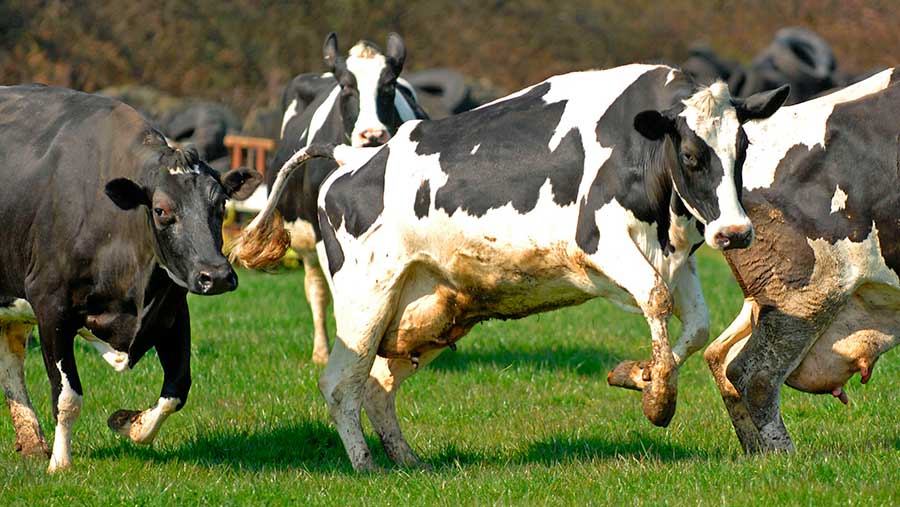5 tips for turning out fresh calved cows
 © Bournemouth News/Rex/Shutterstock
© Bournemouth News/Rex/Shutterstock Some farmers are less comfortable with turning out their fresh calved cows and find it challenging, but realise there are gains to be made by using early grazing to produce cheaper milk from pregnant cows in mid to late lactation.
Below LIC Pasture to Profit consultant Bess Jowsey lists some key tips to help farmers manage turnout more successfully and break the cycle of breaking the important window of opportunity.
See also: Early turnout feeds through to increased dairy margins
1. Don’t underestimate the quality of winter stored pasture
There is a common misconception that winter stored pasture – grass that has grown while stock is housed during the autumn – is poor quality.
Contrary to belief, it is in fact rocket fuel.
Herbage analysis collected by AHDB Dairy from across the UK since 2009 puts the average ME of winter stored pasture above 12.5ME, protein above 25% and dry matter above 20%.
Many farmers allow their farm to be grazed in autumn and winter by dry stock or sheep and miss out on this resource. For those farmers that have carried some grass through winter, I would strongly encourage you to graze this with milking cows to maximise its potential.
This pasture may not look lush or even green. Depending on the winter conditions and length of the grass, the tips may be singed; the sward could be yellowish or even bluish purple – but it is still high dry matter high quality pasture.
For any farmer that doesn’t bring grass through winter, it would be well worth considering keeping some of your drier or easy access fields clear of stock from mid-October to have this option come next spring.
2. The fields closest to the buildings are not a good representation of your farm
These are often the most abused areas on the farm. Go for a walk across your land a month before your usual turnout date to assess ground conditions and grass quantity/quality away from steadings – you may be surprised that the conditions for grazing a fortnight earlier are strategically possible.
3. Refresh your understanding of the 3-leaf principle that governs pasture quality and quantity
A ryegrass plant only ever has three live leaves. Each new leaf is of the same high quality, and is larger than the previous one. When the fourth leaf starts to grow the first leaf dies off.
To maximise quality graze before the fourth leaf starts to grow and graze as much of the third leaf as possible. Grazing between two-and-a-half to three leaves is optimal – the equivalent of 2,700-3,000kg DM/ha.
4. Don’t wait until the grass looks the right height to turn out
By the time you rotate halfway around your grazing fields the grass will be well beyond its third leaf and dropping in quality. Frequently one of two things then happen.
Either you spend longer grazing out properly, meaning the grass on other fields becomes even longer and poorer, or you keep rotating at the same speed, but don’t graze out well enough. This leads to high wastage/rejection which will impact for the rest of the season.
5. Instead turnout before you think you should
- If all your grass is roughly the same length, turnout on to your first paddock at the two-leaf stage or when grass is roughly 2,100kg DM/ha on plate meter or the height of half a beer can
- If you have some variation in grass lengths across your farm turn out a week earlier than comfortable, starting on the higher grass covers first (around 2,400kg DM/ha on plate meter)
- Both these approaches will allow you to keep up with the spring flush better, so you can offer your herd more consistent high-quality palatable grass.
Offering high-quality grass will always encourage cows to consume more resulting in better residuals and more milk with less effort on man and beast.
